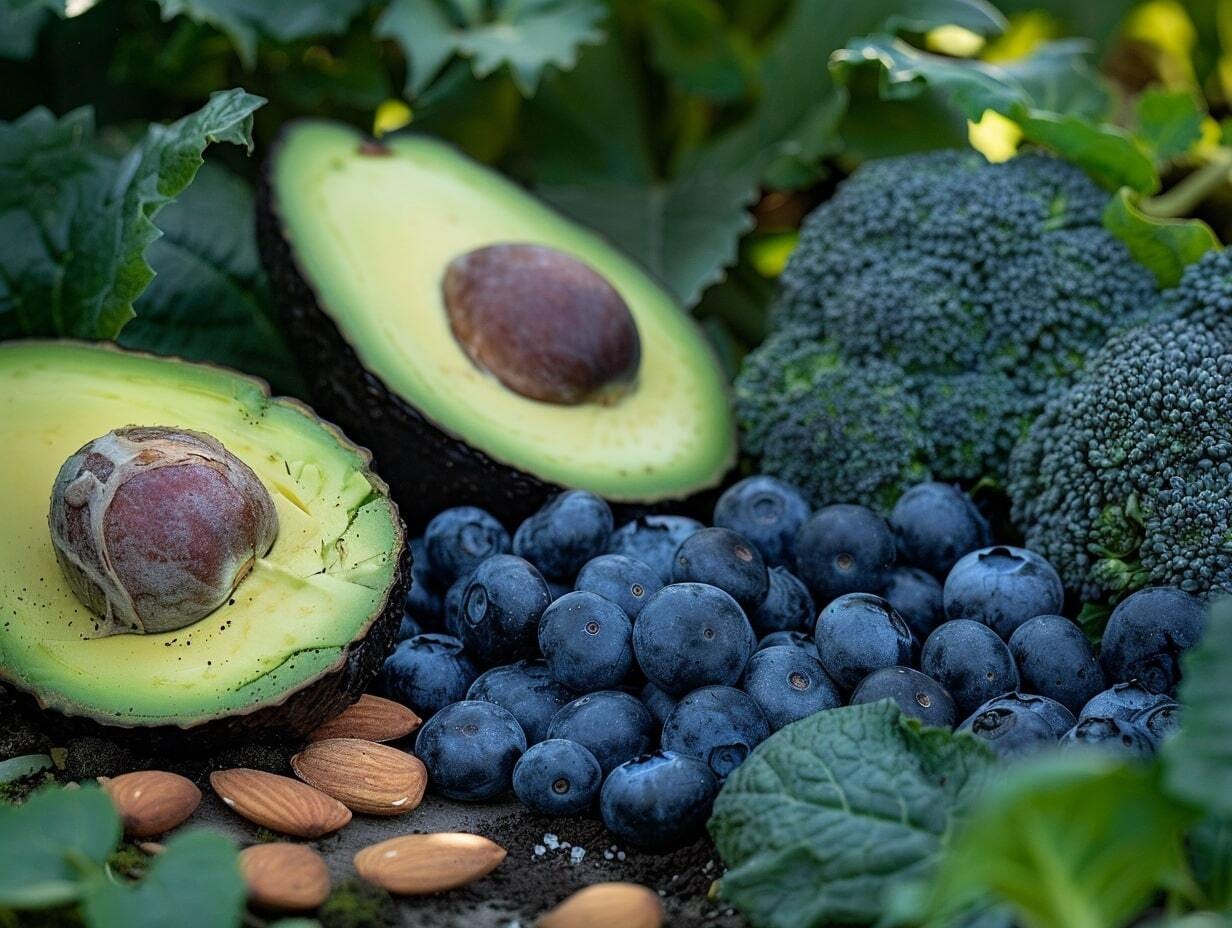When you buy products via links on our website, we might receive an affiliate commission. Learn more
Top 10 Superfoods You Can Grow in Your Backyard

Dive into our compact guide to discover the top 10 superfoods you can cultivate right in your backyard! Transform your garden into a nutrient-rich haven, where every plant offers a health boost.
We'll guide you through easy steps to grow, nurture, and harvest these superfoods, ensuring your meals are as fresh as they are beneficial. Whether you're a beginner or an experienced gardener, our insights will empower you to elevate your diet and wellness directly from your garden.
Blueberries

Blueberries are renowned for their high antioxidant levels, particularly anthocyanins, which give them their blue hue and support cardiovascular health.
To grow blueberries, select a sunny spot with well-drained, acidic soil. Plant them in early spring or fall, spacing bushes 4-6 feet apart to accommodate their mature size.
Mulching with pine needles or sawdust can help maintain soil moisture and acidity.
Regular watering is crucial, especially during dry periods. Pruning annually encourages new growth and fruit production. With proper care, blueberry bushes can yield fruit for decades.
Kale

Kale is a nutritional powerhouse, packed with vitamins A, K, and C, as well as minerals like manganese. It thrives in full sun to partial shade and prefers well-drained, fertile soil.
Plant kale seeds directly in the garden about six weeks before the last frost. Keep the soil consistently moist and mulch to retain moisture and suppress weeds.
Kale is relatively pest-resistant but watch out for aphids and cabbage worms. Harvest leaves from the bottom up, allowing the plant to continue growing and producing.
Spinach

Spinach is a versatile and fast-growing leafy green, rich in iron, magnesium, and vitamins A and C. It prefers cool weather and can be grown in both spring and fall.
For a continuous harvest, plant spinach seeds every few weeks. Spinach requires well-drained soil rich in organic matter. Water regularly to maintain moist soil, especially during hot spells.
Harvest spinach leaves when they're tender and green, cutting them at the base to encourage more leaves to grow.
Garlic

Known for its medicinal properties, garlic is easy to grow and can enhance a variety of dishes.
Plant garlic cloves in the fall for a summer harvest. Choose a sunny spot with well-draining soil. Plant cloves pointy-end up, about 2 inches deep and 4 inches apart.
Garlic requires minimal care; just ensure the soil is moist and weed-free. Harvest garlic when the lower leaves turn brown but the upper leaves are still green. Dry the bulbs in a warm, ventilated area before storing.
Sweet Potatoes

Sweet potatoes are rich in beta-carotene, vitamins, and fiber. They need warm soil and a long frost-free growing season.
Plant slips (sprouted cuttings) after the last spring frost in well-drained, sandy soil. Use a light mulch to keep the soil warm and prevent weeds. Water regularly during dry periods but avoid soggy soil.
Harvest sweet potatoes before the first fall frost, when leaves start to yellow. Cure them in a warm place for about ten days to enhance their sweetness.
Beets

Beets are nutritious, offering high levels of fiber, folate, and manganese. They prefer cool temperatures and well-drained soil rich in organic matter.
Sow beet seeds directly in the garden as soon as the soil can be worked in spring. Thin seedlings to prevent crowding and ensure large, healthy beets.
Keep the soil consistently moist. Harvest beets when they are about the size of a golf ball to avoid toughness.
Broccoli

This cruciferous vegetable is known for its anti-cancer compounds, such as sulforaphane.
Plant broccoli in early spring or late summer for a fall harvest. It prefers full sun and fertile, well-drained soil. Water regularly to keep the soil moist and mulch to retain moisture.
Watch for pests like aphids and cabbage loopers. Harvest broccoli when the head is firm and tight, before the flowers start to open.
Almonds

Growing almonds requires a Mediterranean climate. They need full sun and well-drained soil. Almond trees can take several years to produce nuts, but the wait is rewarding.
Water young trees regularly, but mature trees are drought tolerant. Be aware of bloom times to ensure pollination for nut development. Harvest almonds when the hulls split and the shell is dry.
Quinoa

Quinoa is a protein-rich grain that can grow in various climates. It prefers well-drained soil and full sun.
Sow seeds directly in the garden after the last frost. Quinoa plants can tolerate poor soil but avoid nitrogen-rich fertilizers, which can affect seed production.
Harvest quinoa when leaves have fallen and seeds are hard, drying them before storage.
Avocados

Growing avocados can be challenging but rewarding, especially in warmer climates.
Plant avocado trees in well-drained soil and full sun. They require frequent deep watering and wind protection.
Avocado trees can take several years to bear fruit. In colder regions, grow avocados in large containers and bring them indoors during winter.
Final Words
Transforming your garden into a haven of nutrition isn't just a dream—it's a reality within your reach. By growing these superfoods, you're not just enhancing your diet; you're investing in your health, one harvest at a time.
So, roll up your sleeves and turn your garden into a treasure trove of vitamins, minerals, and antioxidants. Your body (and taste buds) will thank you!
